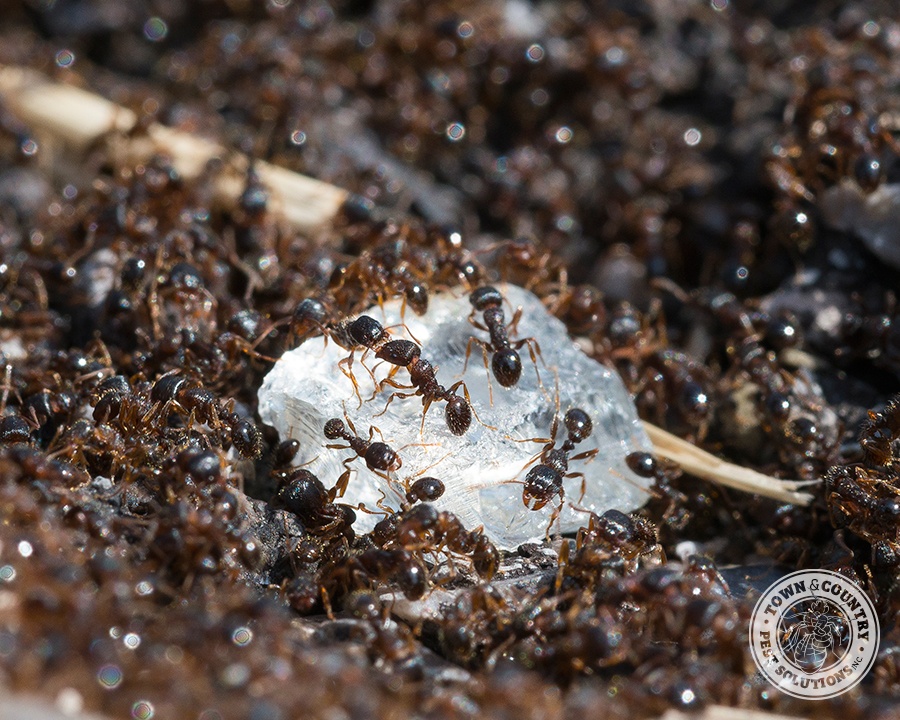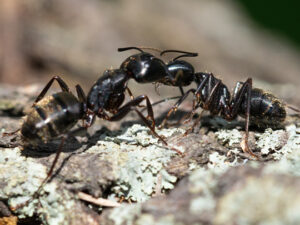
Ants may be small, but their ability to infiltrate homes and establish colonies is anything but. Once they invade, they can quickly become a persistent nuisance, causing frustration for homeowners and potentially contaminating food supplies. Fortunately, with a bit of preparation, knowledge, and professional assistance from Town and Country Pest Solutions, you can keep your home ant-free year-round.
Read on to learn effective prevention strategies, signs of ant infestations, and how we at Town and Country Pest Solutions can help you banish ants for good.
Why Preventing Ants Should Be a Priority
Ants are not just bothersome pests—some species can cause structural damage, contaminate food, or even sting. Here’s why you should make ant prevention a top priority:
- Hygiene Concerns
Ants are constantly searching for food, which means they often travel through unsanitary spaces like trash cans before entering your kitchen. They can spread bacteria and pose a threat to your household’s hygiene.
- Structural Issues
Certain species, like carpenter ants, can hollow out wooden structures and compromise the integrity of your home over time. Unlike termites, carpenter ants don’t eat wood, but the damage they cause is similar.
- Rapid Colonization
Ant colonies can grow quickly, making it harder to eliminate the problem once they settle into your home. A single colony can house thousands of ants, and some species can establish multiple colonies.
Understanding why ant prevention matters helps emphasize the need for proactive measures to protect your property.
How Ants Gain Entry into Your Home
Ants are highly resourceful creatures. Before you can prevent them, it’s important to understand how they get in.
Common Entry Points:
- Cracks and Gaps
Ants often use cracks in walls, windows, and foundations as entry points to your home. Even the smallest opening can become a thoroughfare for a colony.
- Unsealed Doors and Windows
Small gaps under doors or poorly sealed windows provide easy access for ants.
- Plumbing and Wiring
Ants can travel along plumbing lines or electrical wiring to find hidden pathways into your home.
The good news? Sealing these entry points effectively will significantly reduce your risk of infestation.
Top 6 Tips to Prevent Ants in Your Home
Follow these practical tips to keep ants at bay. Prevention starts with changing the way you maintain your home and yard.
Tip 1: Keep Your Home Clean
Cleanliness is one of the simplest yet most effective ways to deter ants. Here’s what to focus on:
- Sweep and vacuum regularly to remove crumbs and spills.
- Store food in airtight containers instead of leaving it out.
- Empty trash bins frequently, and ensure they are sealed with a tight lid.
Tip 2: Eliminate Moisture
Ants are attracted to water sources. By reducing moisture, you make your home less inviting:
- Fix leaky faucets, pipes, or other areas of water accumulation.
- Use a dehumidifier in basements or crawl spaces if humidity is a problem.
- Wipe up water spills promptly, especially in kitchens and bathrooms.
Tip 3: Seal Entry Points
Inspect your home for cracks, crevices, or other entry points. Use the following:
- Caulk for sealing gaps around windows and baseboards.
- Weather stripping around doors to create a tighter seal.
- Wire mesh to cover vents and other potential openings.
Tip 4: Keep Outdoor Areas Tidy
Your yard and garden can attract ants into your home if not maintained properly:
- Trim vegetation and trees away from your home’s exterior walls.
- Remove any debris, such as fallen branches and leaves.
- Store firewood at least 20 feet from your home.
Tip 5: Use Natural and DIY Deterrents
If you want additional layers of defense, these natural methods can serve as deterrents:
- Sprinkle cinnamon or coffee grounds at entry points (ants dislike the strong scent).
- Use a vinegar-water solution to clean counters and remove scent trails left by scout ants.
- Plant ant-repelling herbs like mint, lavender, or basil near windows and doors.
Tip 6: Professional Help When Needed
If prevention methods fail to eliminate an ant infestation, seeking professional help is essential. Town and Country Pest Solutions offers customized treatment plans that target the specific type of ant in your home, ensuring a long-term solution.
Why Choose Town and Country Pest Solutions?
When it comes to tackling ant infestations, not all pest control methods are created equal. This is where Town and Country Pest Solutions stands out.
Our Proven Approach
- Comprehensive Inspections
Our experienced technicians thoroughly assess your home to identify entry points, nest locations, and the type of ants present.
- Targeted Treatments
We use environmentally responsible, industry-leading treatments that are highly effective while being safe for your family and pets.
- Expert Advice
Along with tackling the problem, our team provides long-term tips and advice to help prevent future infestations.
Signs You May Already Have an Ant Infestation
Caught early, an ant infestation is much easier to manage. Look out for these telltale signs:
- Scent Trails: Lines of ants following specific scent paths.
- Sawdust-like Residue: A result of carpenter ants burrowing in wood.
- Nesting Sites: Ants often create mounds or nests near door frames, windows, or dark corners.
- Food Contamination: Finding ants in stored food, especially sugary items.
If you identify any of these signs, don’t wait—call the experts at Town and Country Pest Solutions to address the issue immediately.
Keep Your Home Ant-Free with Town and Country Pest Solutions
Preventing ants from invading your home requires vigilance, maintenance, and occasionally, professional expertise. By following simple prevention tips and understanding how ants gain entry, you can keep these pests at bay.
If you suspect an infestation or need help fortifying your home, Town and Country Pest Solutions is here to help. Our specialized services ensure effective and long-lasting pest control, giving you the peace of mind you deserve.
Don’t wait until it’s too late—Contact us today for a consultation and protect your home from ants and other pests.










